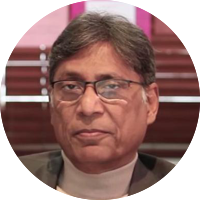Jamshid
Jamshid is a mythological character in Iranian folklore. He is supposed to be the greatest ruler in the history of Iran who ushered the first Golden Age in the country. He is said to be the emperor of the world with a complete control over all the demons and angels. He had divided people into four categories: priests, warriors, farmers and artisans. His rule was marked by abundance of wealth, overall prosperity, and lasting peace. It is said that all sickness disappeared from the land during his reign. Jamshid was also blessed with a royal halo around his head which was a mark of divine blessing on him. One day, his throne was raised to the clouds and he started flying in the sky. This magical happening left his subjects in awe. This day came to be marked as navroz which is still celebrated as Jamshid-e-Navroz.
There is another legend according to which Jamshid possessed a cup called the Jam-e-Jam/Jaam-e-jahaan numa/jam-e-Jamshed which had the elixir of immortality in it and by peeping into it he could observe the universe. This cup features prominently in Persian literature and is said to be the secret of the success of Persian Empire.
Yet another legend related with Jamshid is about the discovery of wine. It tells of a woman who was banished from Jamshid’s harem. In grief, she drank from a bottle containing spoiled grapes which was marked as poison. The grapes had in fact fermented but people thought that it was undrinkable and poisonous. On drinking this, her spirits lifted. She took it to Jamshid who also consumed it to test if her claim was right. When he found it to be true, he did not only take her back into his harem but also decreed that all the grapes in the Kingdom be used only for making this drink which is now know as wine. Jamshid ruled well for three hundred years but soon became arrogant and believed that his success and riches were due to his personal abilities. He also proclaimed himself to be the Creator and demanded that he be given the honours reserved for God. Soon, he lost his divine radiance and people began plotting against him. Zahhak, the ruler of Arabia, declared war against him and his subjects too turned against him. Jamshid fled from the capital but was trapped and killed by Zahhak.
Reference: Jamshid jis ne waz’a kiya jaam kya hua/Wey sohbatein kahaan gaein keedhar wo nao-o-nosh (Meer), Aur bazaar se le aai agar toot gaya/Saghar-e jam se mera jaame-sifaal achha hai (Ghalib), Sultanate dast-ba-dast aai hai/Jaam-e-jam khaatim-e Jamshid naheen (Ghalib), Mitaaya daur-e-saqi muhtasib ne/Udoo Jamshid ka Zahhak nikla (Wazir Ali Saba Lucknowi), Suna hai jam tha Jamshed ke pass/Arey saqi faqeeron ke kudoo se (Bayan Meeruti).
Jamshid is a mythological character in Iranian folklore. He is supposed to be the greatest ruler in the history of Iran who ushered the first Golden Age in the country. He is said to be the emperor of the world with a complete control over all the demons and angels. He had divided people into four categories: priests, warriors, farmers and artisans. His rule was marked by abundance of wealth, overall prosperity, and lasting peace. It is said that all sickness disappeared from the land during his reign. Jamshid was also blessed with a royal halo around his head which was a mark of divine blessing on him. One day, his throne was raised to the clouds and he started flying in the sky. This magical happening left his subjects in awe. This day came to be marked as navroz which is still celebrated as Jamshid-e-Navroz.
There is another legend according to which Jamshid possessed a cup called the Jam-e-Jam/Jaam-e-jahaan numa/jam-e-Jamshed which had the elixir of immortality in it and by peeping into it he could observe the universe. This cup features prominently in Persian literature and is said to be the secret of the success of Persian Empire.
Yet another legend related with Jamshid is about the discovery of wine. It tells of a woman who was banished from Jamshid’s harem. In grief, she drank from a bottle containing spoiled grapes which was marked as poison. The grapes had in fact fermented but people thought that it was undrinkable and poisonous. On drinking this, her spirits lifted. She took it to Jamshid who also consumed it to test if her claim was right. When he found it to be true, he did not only take her back into his harem but also decreed that all the grapes in the Kingdom be used only for making this drink which is now know as wine. Jamshid ruled well for three hundred years but soon became arrogant and believed that his success and riches were due to his personal abilities. He also proclaimed himself to be the Creator and demanded that he be given the honours reserved for God. Soon, he lost his divine radiance and people began plotting against him. Zahhak, the ruler of Arabia, declared war against him and his subjects too turned against him. Jamshid fled from the capital but was trapped and killed by Zahhak.
Reference: Jamshid jis ne waz’a kiya jaam kya hua/Wey sohbatein kahaan gaein keedhar wo nao-o-nosh (Meer), Aur bazaar se le aai agar toot gaya/Saghar-e jam se mera jaame-sifaal achha hai (Ghalib), Sultanate dast-ba-dast aai hai/Jaam-e-jam khaatim-e Jamshid naheen (Ghalib), Mitaaya daur-e-saqi muhtasib ne/Udoo Jamshid ka Zahhak nikla (Wazir Ali Saba Lucknowi), Suna hai jam tha Jamshed ke pass/Arey saqi faqeeron ke kudoo se (Bayan Meeruti).
Additional information available
Click on the INTERESTING button to view additional information associated with this sher.
About this sher
rare Unpublished content
This ghazal contains ashaar not published in the public domain. These are marked by a red line on the left.

